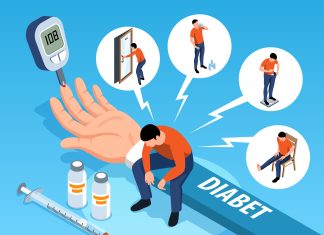Latin America is commonly believed to be a prospective market for Russian pharmaceuticals. The Pharmasyntez Group of Companies is one the Russian manufacturers taking active steps in that direction. It is going to focus on the import of anti-cancer drugs. Grigory Demidov, the international project executive of Pharmasyntez, told us what it is like to work in the region, what specific features it has and what opportunities it offers for pharmaceutical business growth.
Speaking about import, what makes Latin American markets attractive for a Russian company?
One of the key factors for us is that in the region there regulatory authorities carrying out manufacturer certification in compliance with PIC/S GMP guidelines. Such certificate will contribute to both strengthening and expanding the Group’s market presence in the region and will be a useful tool for entering other PIC/S countries around the globe. In addition, Latin America historically feels pretty favorably disposed towards pharmaceutical products manufactured in Russia. It means that partners are all up for cooperation from the very beginning and they put great efforts to get a joint success.
Is it a region with unified regulatory requirements to the pharmaceutical industry?
Latin America is a very heterogeneous market and we have to consider specific requirements of local regulatory authorities to exporters. In a number of countries there are high regulatory standards. In some countries, inspectorates are PIC/S members (such as in Brazil, Mexico, and Argentina), while in other countries they are not and foreign suppliers have to get a local GMP certificate (e.g. in Peru and Columbia).
And some countries accept a certificate issued by the Russian regulatory authority.
In Central America, some countries do not require submitting samples as a part of the initial marketing authorization application. However, requirements greatly vary in this very small region. For example, a waste handling report is required in Panama, while it is not necessary in Guatemala, Nicaragua, and Costa-Rica. A Periodic Safety Update Report (PSUR) has to be provided as a part of the marketing authorization application in Guatemala and Salvador, but it is not required in Honduras, Nicaragua, and the Dominican Republic. As you see, each country has its specific features that have to be carefully studied before entering the market.
What all Latin American markets have in common is that they these countries are Spanish speaking except Brazil with Portuguese as the national language. Considering this fact, one dossier prepared in compliance with local requirements and translated into Spanish will be accepted in the majority of the countries of the region.
U.S. companies traditionally enjoy a very strong position in Latin America. How does it influence your strategy in the region?
Yes, American manufacturers have certain advantages here. But we work our own way relying on a network of partners in the region. It is essential to find a partner company that is competent at regulatory issues, is able to analyze all the documents and dossier, and give consultations on letters to be sent, on actions to be taken to fast tract the marketing authorization application, on getting ready for an inspection, etc. Actually, it is a first step into any new market.
Before entering a market, we study requirements and gain support of local pharmaceutical companies having a pharmaceutical warehouse and competent at dealing with the regulatory authority. Keeping a constant liaison with the partner is very important. You should find ways to communicate efficiently despite the time difference.
What markets do you give a priority to from the view point of regulatory requirements?
These are certainly the markets that accept GMP certificates issued by the Russian regulator as it definitely speeds up the market entry. But they not numerous and not big: the Dominican Republic and Venezuela. Unfortunately, they do not belong to the group of regional leaders.
Strategically, it is the Big Three: Mexico, Brazil, and Argentina that is the market we are most interested in down the road.
Are you going to enter the region with the entire portfolio of anti-cancer drugs or with a specially developed range of products?
Cancer is one of the key healthcare challenges both in Latin America and all over world. No doubt, drugs for the treatment of diabetes mellitus and antibiotics look very promising. However, anti-cancer drugs are manufactured by one of the most modern plants of the Group, i.e. by Pharmasyntez Nord, that has all the required expertise, documents, valid certificates, up-to-date equipment, that is why, with regard to regulatory issues, entering new markets with anti-cancer drugs is the most efficient for us.
What will you promote as the competitive advantage in the region?
The Pharmasyntez Group of Companies is one of the biggest Russian manufacturers of drugs for the treatment of socially significant diseases and we produce these drugs, including active pharmaceutical ingredients, at modern facilities. For regulatory authorities, our competitive advantage is compliance with requirements and prompt action.
What is the most important experience you gained after you started working with Latin America?
I would say that this market did not bring any eye-opening experience to us, as it is well predicted, comprehensible, and logical. Definitely, drugs that have been approved in the so-called “strict regulation” countries, such as U.S., E.U., Japan, South Korea, and Australia, have certain advantages. The most surprising fact for us is that, in some countries, product samples are not required as a part of marketing authorization application, which means the process of the product review and approval is based on the dossier and other documents submitted by the manufacturer to the regulatory authority. It is not until after the regulator approves a marketing authorization issue that submission of samples may be requested.
What aim do you set for your company in the region in terms of regulatory issues?
It is very simple: to pass successfuly all the inspections by regulatory authorities, get local and PIC/S GMP certificates, and to get marketing authorizations for the most in-demand drug products.





